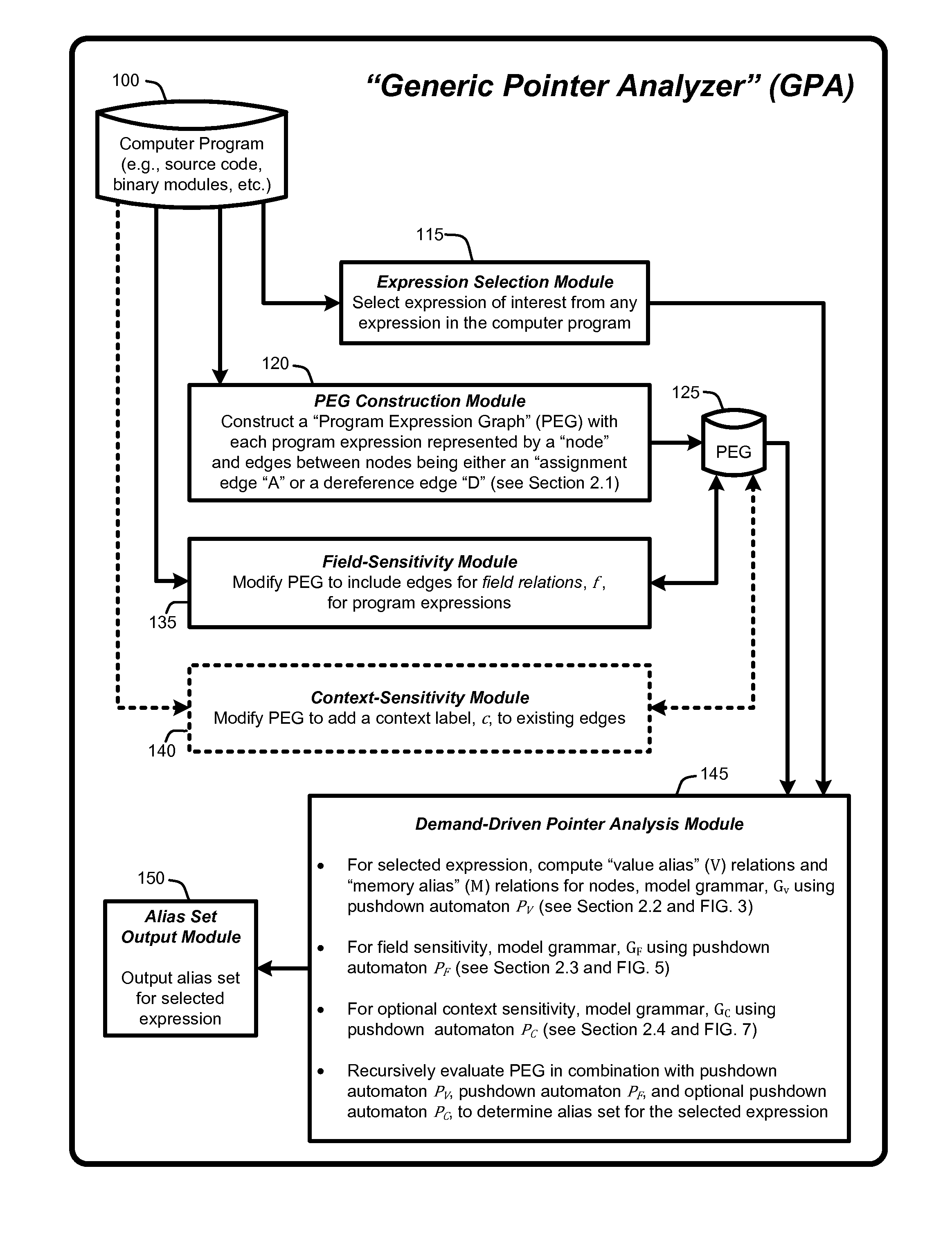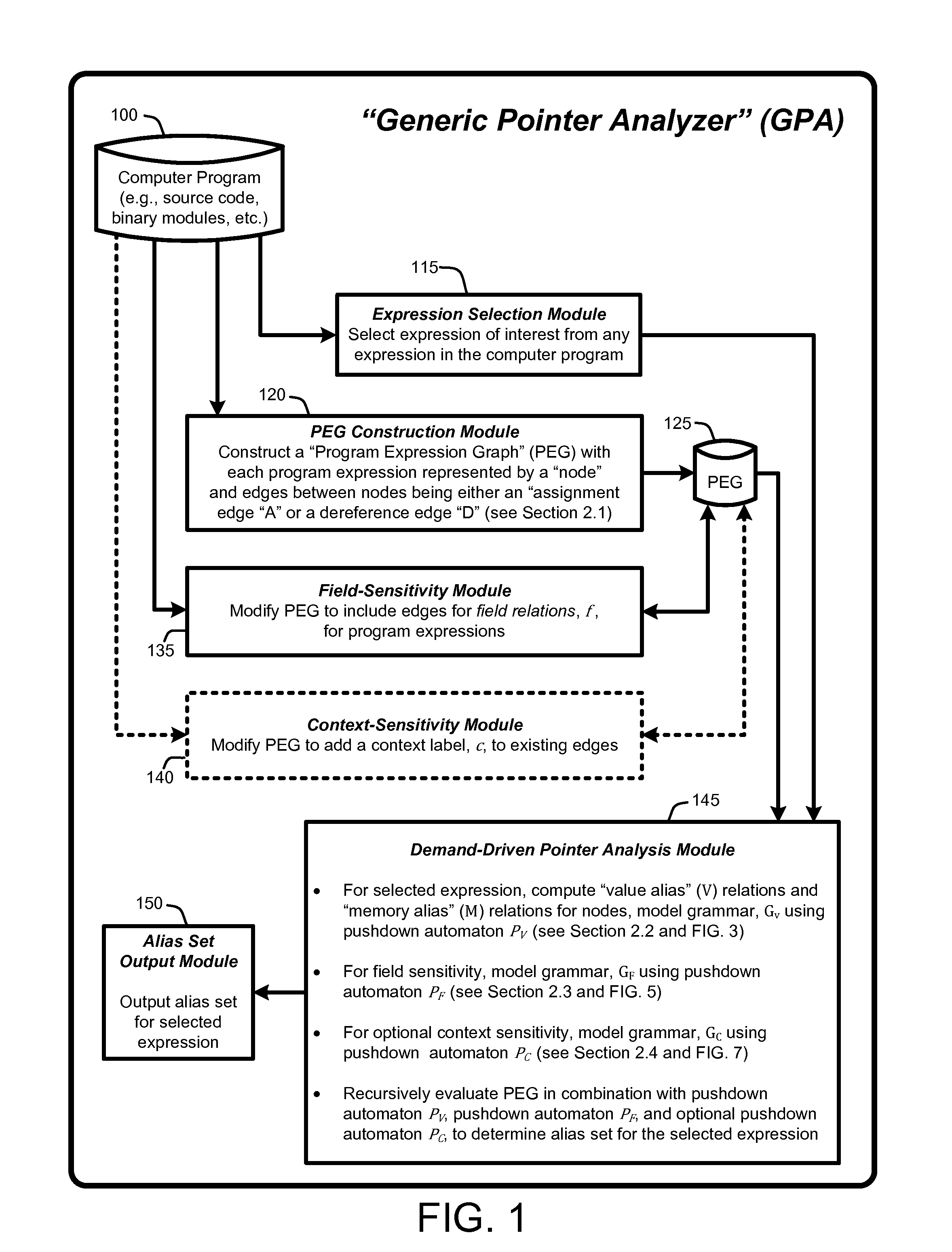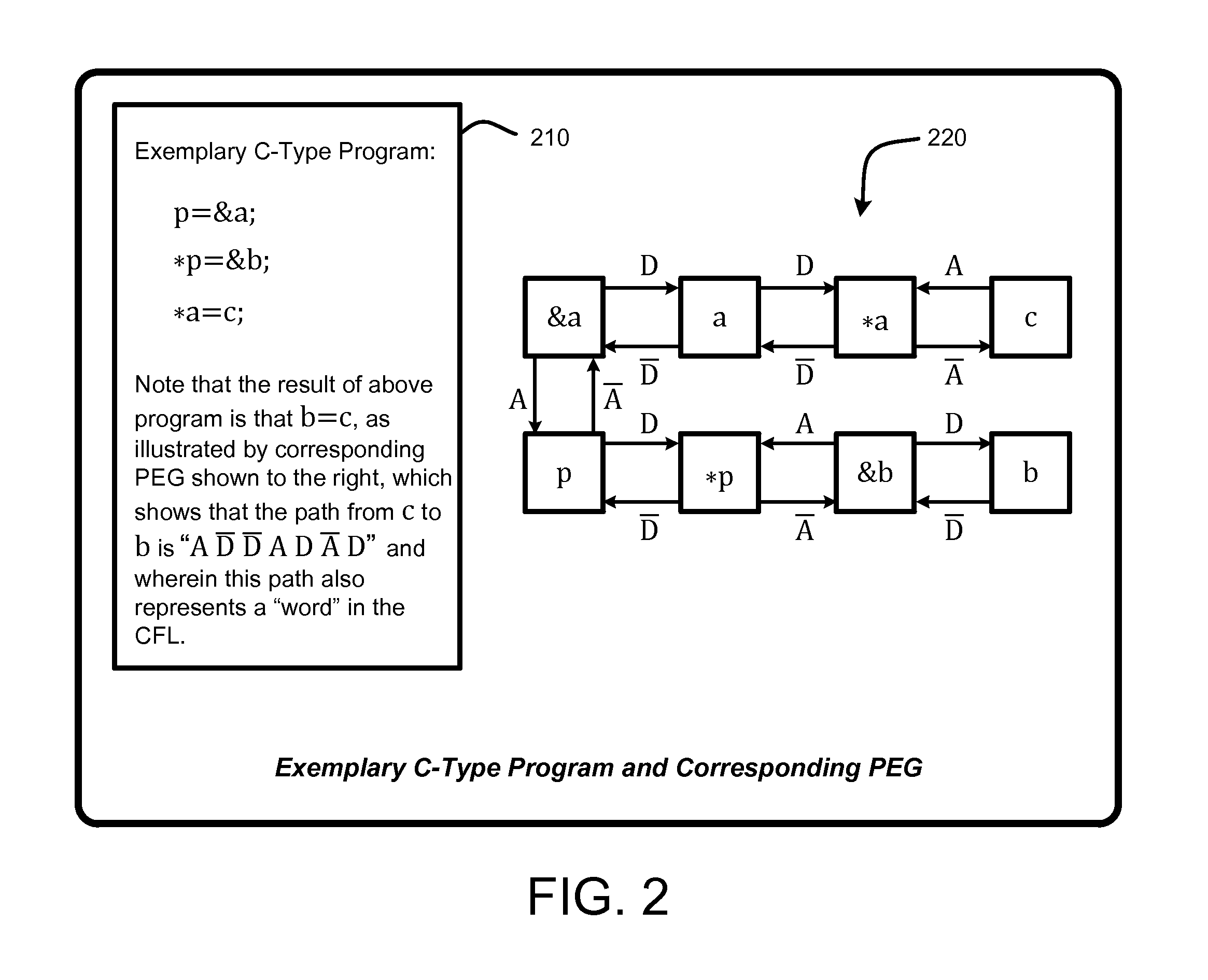Demand-driven analysis of pointers for software program analysis and debugging
a software program and pointer analysis technology, applied in the field of demand-driven pointer analyzers, can solve the problems of difficult to perform certain tasks on the memory of a program, the type information of system programs typically not readily available for dynamic data developed in native code, and the conventional technique is generally not adequate for robustly and quickly analyzing memory. , to achieve the effect of rapid identification of aliases
- Summary
- Abstract
- Description
- Claims
- Application Information
AI Technical Summary
Benefits of technology
Problems solved by technology
Method used
Image
Examples
Embodiment Construction
[0028]In the following description of the embodiments of the claimed subject matter, reference is made to the accompanying drawings, which form a part hereof, and in which is shown by way of illustration specific embodiments in which the claimed subject matter may be practiced. It should be understood that other embodiments may be utilized and structural changes may be made without departing from the scope of the presently claimed subject matter.
[0029]1.0 Introduction:
[0030]In general, a “Demand-Driven Pointer Analyzer” or “DDPA”, as described herein, provides a “demand-driven” field-sensitive pointer analysis process that rapidly and accurately identifies alias sets for selected pointers in software modules or programs (i.e., source code, binary modules, etc.) of any size. The pointer alias sets can then be used for a variety of purposes, such as debugging or optimizing the software, identifying types of dynamic data in a memory snapshot captured during program execution, etc. Note...
PUM
 Login to View More
Login to View More Abstract
Description
Claims
Application Information
 Login to View More
Login to View More - R&D
- Intellectual Property
- Life Sciences
- Materials
- Tech Scout
- Unparalleled Data Quality
- Higher Quality Content
- 60% Fewer Hallucinations
Browse by: Latest US Patents, China's latest patents, Technical Efficacy Thesaurus, Application Domain, Technology Topic, Popular Technical Reports.
© 2025 PatSnap. All rights reserved.Legal|Privacy policy|Modern Slavery Act Transparency Statement|Sitemap|About US| Contact US: help@patsnap.com



